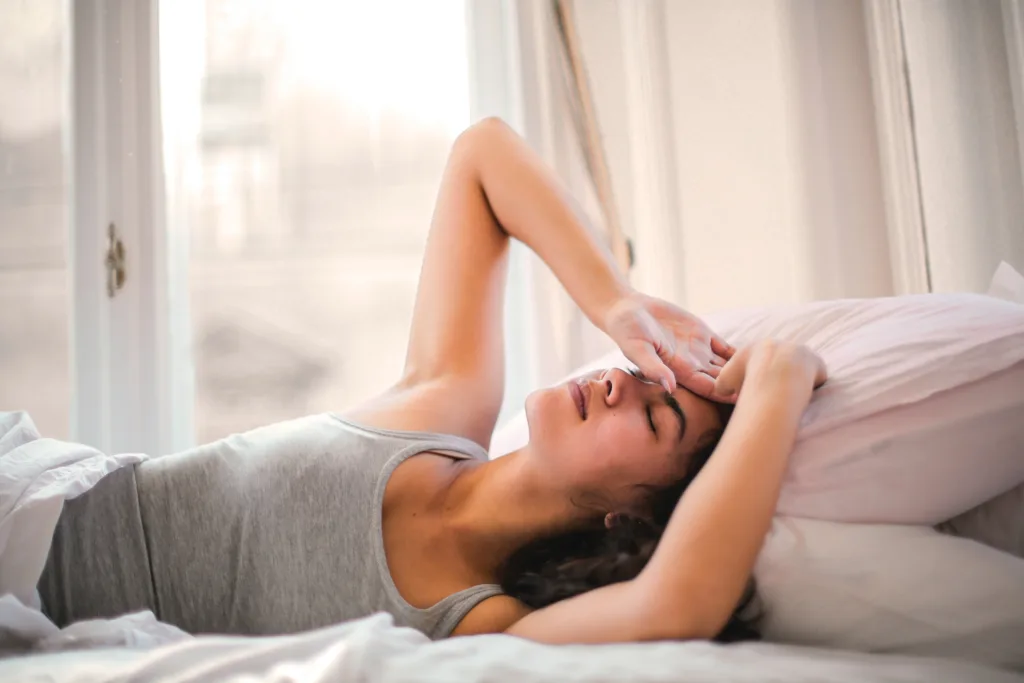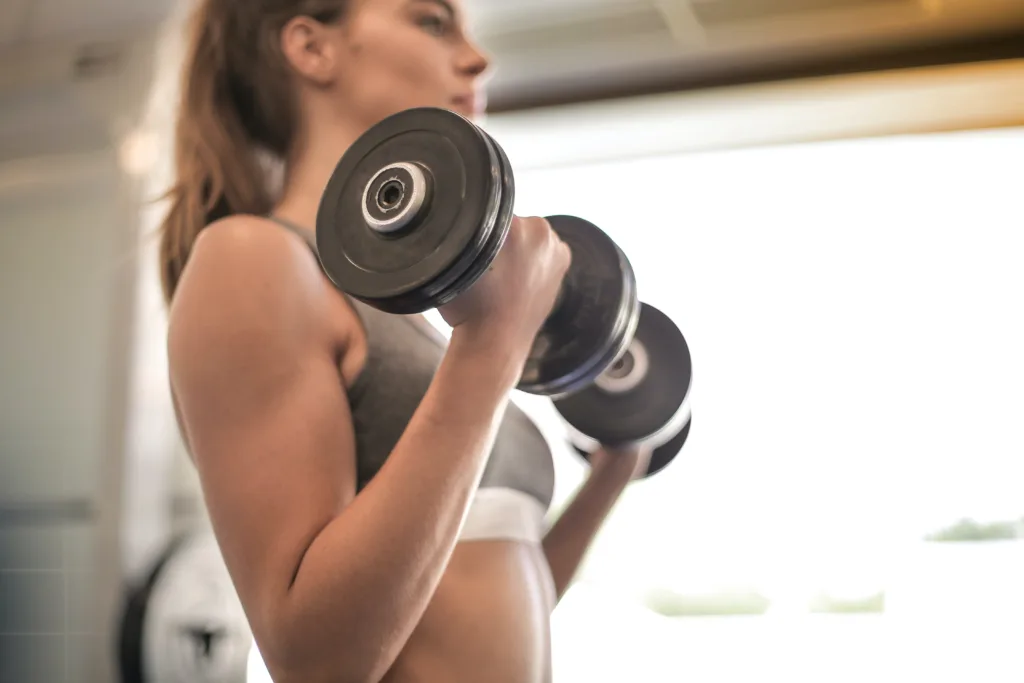In today’s fast-paced world, physical activity has taken a backseat for many women. The demands of work, family, and other responsibilities have left little time for exercise. Unfortunately, this sedentary lifestyle can have serious consequences on women’s health. But fear not! In this article, we will explore the reasons behind women’s inactivity, the importance of reactivating them, strategies to encourage physical activity, inspiring case studies, and tips to overcome barriers to reactivation.
Understanding Inactivity in Women
When it comes to inactivity, women face unique challenges. The impacts of a sedentary lifestyle on women’s health cannot be overlooked. Research has shown that physical inactivity can increase the risk of chronic diseases in women, such as heart disease, type 2 diabetes, and certain types of cancer. It can also contribute to mental health issues like depression and anxiety.
Social and psychological factors also play a significant role in women’s inactivity. Factors like self-consciousness, lack of confidence, and fear of judgment can discourage women from participating in physical activity. Additionally, societal expectations and gender norms may limit opportunities for women to engage in exercise.
Let’s delve deeper into the impact of physical inactivity on women’s health. When women lead sedentary lives, they are more prone to developing cardiovascular diseases. The lack of physical activity weakens the heart muscles, leading to decreased blood flow and increased risk of heart attacks and strokes. Moreover, physical inactivity can contribute to the development of type 2 diabetes, a condition characterized by high blood sugar levels. Regular exercise helps regulate blood sugar levels and improves insulin sensitivity, reducing the risk of diabetes in women.
Furthermore, women who lead inactive lifestyles are at a higher risk of developing certain types of cancer. Research has shown that physical activity can help reduce the risk of breast and colon cancers in women. Engaging in regular exercise promotes healthy hormone levels and boosts the immune system, which plays a crucial role in preventing cancer development and progression.
While the physical health implications of inactivity are significant, the mental health consequences should not be overlooked. Women who are inactive are more susceptible to experiencing depression and anxiety. Physical activity has been shown to release endorphins, which are natural mood elevators. Regular exercise can help alleviate symptoms of depression and anxiety, improve sleep quality, and boost overall mental well-being.
However, it’s important to acknowledge that women face unique barriers to physical activity. Self-consciousness and lack of confidence can prevent women from participating in exercise. The fear of judgment, particularly in gym settings or group activities, can be a significant deterrent. Women may feel pressured to conform to societal expectations of appearance and may avoid physical activity altogether to avoid scrutiny.
Moreover, gender norms and societal expectations can limit opportunities for women to engage in exercise. Traditional gender roles often assign caregiving responsibilities to women, leaving little time and energy for self-care and physical activity. Additionally, women may face cultural or religious barriers that discourage them from participating in certain types of exercise or sports.
It is crucial to address these barriers and create inclusive and supportive environments that encourage women to be physically active. By promoting body positivity, fostering confidence, and challenging societal norms, we can empower women to prioritize their health and well-being.

The Importance of Reactivating Inactive Women
Reactivating inactive women is not only crucial for their overall well-being but also plays a significant role in society. Regular physical activity not only improves physical health but also enhances mental and emotional well-being. Women who engage in exercise experience a greater sense of empowerment and self-confidence, which positively impacts their personal and professional lives.
Physical activity offers numerous benefits to women of all ages and backgrounds. It strengthens the heart and muscles, improves bone density, and reduces the risk of chronic diseases such as heart disease, diabetes, and certain types of cancer. By engaging in regular exercise, women can significantly lower their chances of developing these life-threatening conditions.
In addition to the physical benefits, exercise also has a profound impact on mental health. Regular physical activity releases endorphins, also known as “feel-good” hormones, which help alleviate symptoms of depression and anxiety. Women who exercise regularly often report improved mood, reduced stress levels, and increased overall well-being.
Furthermore, physical activity plays a vital role in maintaining a healthy weight. Inactive women are more likely to experience weight gain and obesity, which can lead to various health issues, including cardiovascular problems and joint pain. By reactivating inactive women and encouraging them to engage in regular exercise, we can help them achieve and maintain a healthy weight, reducing their risk of obesity-related diseases.
Exercise also has a positive impact on sleep quality. Regular physical activity promotes better sleep patterns, allowing women to wake up feeling refreshed and rejuvenated. Quality sleep is essential for overall well-being, as it helps regulate hormones, improves cognitive function, and supports a healthy immune system.
Moreover, physical activity provides an opportunity for social interaction and community engagement. Joining exercise classes or participating in group activities allows women to connect with like-minded individuals and build a support network. This social aspect of exercise can help combat feelings of isolation and loneliness, particularly for women who may have limited social interactions in their daily lives.
In conclusion, the importance of reactivating inactive women cannot be overstated. Regular physical activity not only improves physical health but also enhances mental and emotional well-being. The benefits of exercise extend far beyond the physical realm, positively impacting various aspects of a woman’s life. By promoting and encouraging physical activity, we can empower women to take control of their health and well-being, leading to a happier, healthier, and more fulfilling life.

Strategies to Encourage Physical Activity Among Women
Creating a supportive environment is key to encouraging physical activity among women. Women need spaces and programs that are inclusive, safe, and non-judgmental. By promoting body positivity and embracing diversity, we can make physical activity more appealing to women of all shapes, sizes, and abilities.
Incorporating physical activity into daily routines is another effective strategy. Encouraging women to incorporate short bursts of exercise throughout the day can be more manageable and less intimidating than a single long workout session. Taking the stairs instead of the elevator, walking during lunch breaks, or even dancing while doing household chores are simple ways to stay active.
Furthermore, it is important to recognize the benefits of group activities in promoting physical activity among women. Group activities not only provide a sense of camaraderie and support, but they also make exercising more enjoyable. Women can join fitness classes, sports teams, or recreational clubs to engage in physical activity while socializing with like-minded individuals.
Additionally, providing accessible and affordable options for physical activity is crucial in encouraging women to engage in regular exercise. Many women face barriers such as lack of time, financial constraints, or limited access to fitness facilities. By offering affordable membership plans, flexible class schedules, and community-based programs, we can remove these obstacles and make physical activity more accessible to all women.
It is also important to address the specific needs and interests of women when designing physical activity programs. Women may have different preferences when it comes to exercise, and tailoring programs to their interests can increase participation. For example, offering a variety of activities such as yoga, dance, swimming, or outdoor adventures can cater to different preferences and ensure that women find an activity they enjoy.
Furthermore, education and awareness play a crucial role in encouraging physical activity among women. Providing information about the benefits of exercise, the importance of maintaining a healthy lifestyle, and the potential risks of a sedentary lifestyle can motivate women to prioritize physical activity. Workshops, seminars, and online resources can be utilized to disseminate this information and empower women to take charge of their health.
Lastly, it is essential to involve women in the decision-making processes related to physical activity initiatives. By actively seeking their input and involving them in the planning and implementation of programs, we can ensure that their needs and preferences are considered. This participatory approach can foster a sense of ownership and empowerment among women, leading to increased engagement in physical activity.

Case Studies of Successful Reactivation
When it comes to reactivating inactive women, success stories can be incredibly motivating. Hearing personal accounts of women who have overcome barriers and embraced an active lifestyle can inspire others. These stories highlight the power of determination, resilience, and the support of a community.
Community programs have played a vital role in successfully reactivating women. By offering group exercise classes, fitness challenges, and support networks, these programs provide women with the tools and encouragement they need to stay active. They create a sense of belonging and foster friendships, making physical activity enjoyable and sustainable.
One remarkable case study involves Sarah, a 35-year-old woman who had been leading a sedentary lifestyle for several years. Sarah had always been interested in fitness but struggled to find the motivation to get back into it. She felt self-conscious about her body and feared being judged by others at the gym.
Fortunately, Sarah discovered a community program called “Fit and Fabulous” that was specifically designed for women like her. The program offered a variety of group exercise classes, including yoga, Zumba, and strength training. Sarah was initially hesitant to join, but the supportive and welcoming atmosphere encouraged her to give it a try.
Through the “Fit and Fabulous” program, Sarah not only found a way to get active but also made new friends who shared similar goals and struggles. The group exercise classes provided her with the structure and accountability she needed to stay committed to her fitness journey. The instructors were knowledgeable and supportive, ensuring that Sarah felt comfortable and confident in her abilities.
Over time, Sarah’s confidence grew, and she began to see significant improvements in her physical and mental well-being. She lost weight, gained strength, and developed a positive body image. The friendships she formed within the program became a source of motivation and support, pushing her to reach new fitness milestones.
Another inspiring case study is the story of Lisa, a 40-year-old mother of two who had let her fitness take a backseat while raising her children. Lisa felt overwhelmed and exhausted, often putting her own needs last. She knew she needed to prioritize her health but didn’t know where to start.
Luckily, Lisa came across a community program called “Mom’s Fitness Tribe” that catered to busy moms like her. The program offered a range of fitness activities, including stroller workouts, mommy and me classes, and nutritional workshops. Lisa was intrigued by the idea of working out with other moms and incorporating her children into her fitness routine.
Joining the “Mom’s Fitness Tribe” program was a game-changer for Lisa. Not only did she find a supportive community of like-minded moms, but she also discovered creative ways to involve her children in her fitness journey. The stroller workouts allowed her to bond with her kids while getting a good workout, and the mommy and me classes provided a fun and interactive way to stay active as a family.
Through the “Mom’s Fitness Tribe” program, Lisa regained her energy and rediscovered her passion for fitness. She became a role model for her children, teaching them the importance of leading a healthy and active lifestyle. The program not only helped her physically but also provided a much-needed outlet for stress and self-care.
These case studies demonstrate the transformative power of community programs in reactivating inactive women. By creating a supportive and inclusive environment, these programs empower women to overcome obstacles and embrace an active lifestyle. The stories of Sarah and Lisa serve as a reminder that with the right tools, encouragement, and community, anyone can achieve their fitness goals and lead a healthier, happier life.

Overcoming Barriers to Reactivation
Psychological barriers can often prevent women from engaging in physical activity. Negative self-image, fear of failure, and lack of confidence can make it challenging for women to take the first step. Addressing these barriers requires a multi-faceted approach.
Supportive environments that emphasize body positivity and provide positive reinforcement can help women overcome psychological barriers. Encouraging women to focus on the joy of movement rather than external appearances can shift their mindset and motivate them to stay active.
Additionally, it is important to recognize the impact of societal pressures on women’s self-image. The media often portrays a narrow and unrealistic beauty standard, which can contribute to negative self-perception. By promoting diversity and inclusivity in fitness campaigns and advertisements, we can help women feel more accepted and confident in their bodies.
Furthermore, addressing fear of failure is crucial in overcoming psychological barriers. Many women may have had negative experiences in the past, such as being ridiculed or discouraged from participating in physical activities. Creating a safe and non-judgmental environment, where women are encouraged to explore their capabilities at their own pace, can help rebuild their confidence and overcome the fear of failure.
Physical barriers, such as limited access to safe exercise spaces or lack of childcare, can also hinder women’s reactivation. By advocating for more accessible facilities and promoting family-friendly exercise options, we can help remove these obstacles and create a more inclusive fitness landscape for women.
Moreover, it is essential to address the issue of time constraints that many women face. Juggling multiple responsibilities, such as work, household chores, and caregiving, can leave little time and energy for physical activity. Offering flexible exercise programs, such as online workouts or shorter, high-intensity sessions, can make it easier for women to incorporate exercise into their busy schedules.
In addition to physical barriers, cultural and social norms can also play a significant role in hindering women’s reactivation. In some communities, women may face judgment or disapproval for engaging in physical activities outside of traditional gender roles. By challenging these norms and promoting gender equality in sports and fitness, we can empower women to pursue their fitness goals without fear of social backlash.
Furthermore, providing educational resources and information about the benefits of physical activity can help dispel misconceptions and motivate women to prioritize their health. Highlighting the positive impact of exercise on mental well-being, stress reduction, and disease prevention can encourage women to overcome their barriers and make physical activity a priority in their lives.
Ultimately, overcoming barriers to reactivation requires a comprehensive approach that addresses both psychological and physical obstacles. By creating supportive environments, advocating for accessible facilities, challenging societal norms, and providing educational resources, we can empower women to overcome their barriers and embrace a more active and healthy lifestyle.
Maintaining an Active Lifestyle
Staying motivated to maintain an active lifestyle can be challenging, but it’s not impossible. Here are a few tips to keep the fire alive:
- Set realistic goals: Start small and gradually increase the intensity and duration of your workouts.
- Find activities you enjoy: Choose activities that bring you joy, whether it’s dancing, swimming, hiking, or playing a sport.
- Stay accountable: Join exercise groups or find an exercise buddy who can keep you motivated and accountable.
- Track your progress: Keep a record of your workouts to see how far you’ve come and celebrate your achievements.
In addition to these tips, it’s important to prioritize regular check-ups with your healthcare provider. Regular check-ups can help identify any health concerns and ensure that your chosen exercise routine is safe and suitable for your individual needs.
Maintaining an active lifestyle not only benefits your physical health but also has a positive impact on your mental well-being. Engaging in regular exercise releases endorphins, which are known as the “feel-good” hormones. These endorphins can boost your mood, reduce stress and anxiety, and improve overall cognitive function.
Another key aspect of maintaining an active lifestyle is incorporating healthy eating habits. A balanced diet that includes a variety of fruits, vegetables, lean proteins, and whole grains provides the necessary nutrients to fuel your workouts and support your body’s needs.
Furthermore, it’s important to remember that an active lifestyle is not limited to structured workouts. Incorporating physical activity into your daily routine can be as simple as taking the stairs instead of the elevator, walking or biking to work, or engaging in active hobbies such as gardening or dancing.
When it comes to maintaining motivation, it can be helpful to set rewards for yourself when you reach certain milestones. Treat yourself to a new workout outfit, a massage, or a day of relaxation to celebrate your progress and keep yourself motivated.
Additionally, finding a community of like-minded individuals who share your passion for an active lifestyle can provide a sense of belonging and support. Joining fitness classes, participating in local sports leagues, or attending group exercise sessions can help you connect with others who are on a similar journey.
In conclusion, maintaining an active lifestyle is not just about physical fitness; it encompasses various aspects of well-being, including mental health, nutrition, and community engagement. By incorporating these tips into your life, you can create a sustainable and enjoyable routine that will keep you motivated and energized to live life to the fullest.
Thank you for reading this post, don't forget to subscribe to our free newsletter
!
